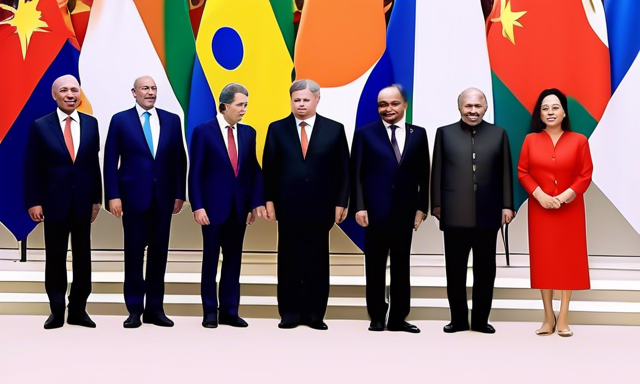Insights from the BRICS Summit: New Initiatives and Member Expansions 🌍
The recent BRICS Summit held in Kazan, Russia, unveiled significant developments including the launch of BRICS Pay, an expansion of membership, and fresh financing strategies. This year’s summit marks a pivotal moment for nations in the Global South and poses challenges to the dominant U.S.-led financial system. Here’s an overview of the summit’s major highlights and implications for the global economic landscape.
Key Highlights from the Summit 📊
This year’s BRICS meeting featured the original members—Brazil, Russia, India, China, and South Africa—along with four newly invited members: Ethiopia, Iran, Egypt, and the United Arab Emirates. The summit attracted attention not only for its expanding membership but also for its demonstration of the growing solidarity among the Global South.
– **New Members**: 13 additional countries have expressed interest in joining BRICS, indicating a broader push for alternatives to the existing global financial order.
– **Media Coverage**: The summit did not receive extensive media attention, possibly due to the implications it poses to Western geopolitical interests.
– **Global Representation**: The combined population of BRICS nations represents nearly half of the global populace, contrasted sharply with the G7 nations, which account for only about 10%.
The Development of BRICS Pay 💳
One of the most talked-about announcements was the introduction of BRICS Pay, designed to compete with SWIFT and enhance transactional efficiency among member nations. It aims to provide a decentralized payment system that does not rely on traditional banking infrastructures.
– **BRICS Pay Features**:
– A QR code application for retail consumers
– A Business-to-Business (B2B) platform for institutions
– Plans for a digital currency within the BRICS ecosystem
– An international cross-border securities settlement system
This initiative, which has been in development since 2018, positions itself as a formidable rival in the global payment landscape, leveraging advanced technologies developed in collaboration with academic institutions.
The New Development Bank: A Shift Toward Local Funding 💼
A crucial takeaway from this year’s gathering was the emphasis on local currency financing, spearheaded by the BRICS Development Bank. The bank aims to provide loans in currencies that are manageable for borrowing nations, thereby reducing reliance on the U.S. dollar.
– **Past Challenges**: Prior to Dilma Rousseff’s leadership, the bank faced significant financial hurdles. However, since her appointment, it has raised approximately $122 billion, predominantly from China and Middle Eastern nations.
– **Future Goals**: The bank intends to ensure that at least 30% of its loans are issued in local currencies, allowing developing countries to manage their debt obligations more effectively. This aligns with efforts to address the financial challenges posed by the current dollar-based system.
The Larger Implications for the Global Financial System 🔍
This year’s BRICS Summit has implications for the U.S. dollar’s supremacy within the world’s financial systems. As various nations seek alternatives, the trend of dollarization is likely to continue.
– **Rising Interest Rates**: Rising rates in the U.S. have made dollar-denominated loans more costly, particularly affecting developing nations, which often face high inflation rates as a direct consequence.
– **Global Shift**: Continued interest in BRICS membership among nearly 50 countries signifies a clear move towards alternatives to the existing financial systems dominated by the West.
Hot Take: The Future of Global Economies 🌐
The momentum generated by the BRICS Summit points toward a reshaped international financial landscape. Countries are shifting their focus away from dollar dependency and exploring strategies to work collaboratively within a new framework. As more nations come on board, the collective power of BRICS could rival that of existing financial systems.
– **Commodity Markets**: A significant portion of BRICS nations being rich in commodities is strategically advantageous. It sets the stage for a commodity-based economy that could very well overshadow the U.S. dollar’s influence.
– **Long-Term Outlook**: While the shift away from the dollar will require time and effort, the ongoing developments from the BRICS summit showcase a commitment to fostering a more interconnected and financially stable Global South. This transformation is not instantaneous, but the groundwork laid during the summit suggests that a robust alternative is on the horizon.
In conclusion, the BRICS countries are laying the foundation for an evolving economic alliance that is likely to impact global financial strategies in the years to come. The world is watching as these nations chart a course toward a future less reliant on the U.S. dollar, potentially changing the dynamics of global trade and investment.





 By
By
 By
By
 By
By
 By
By
 By
By